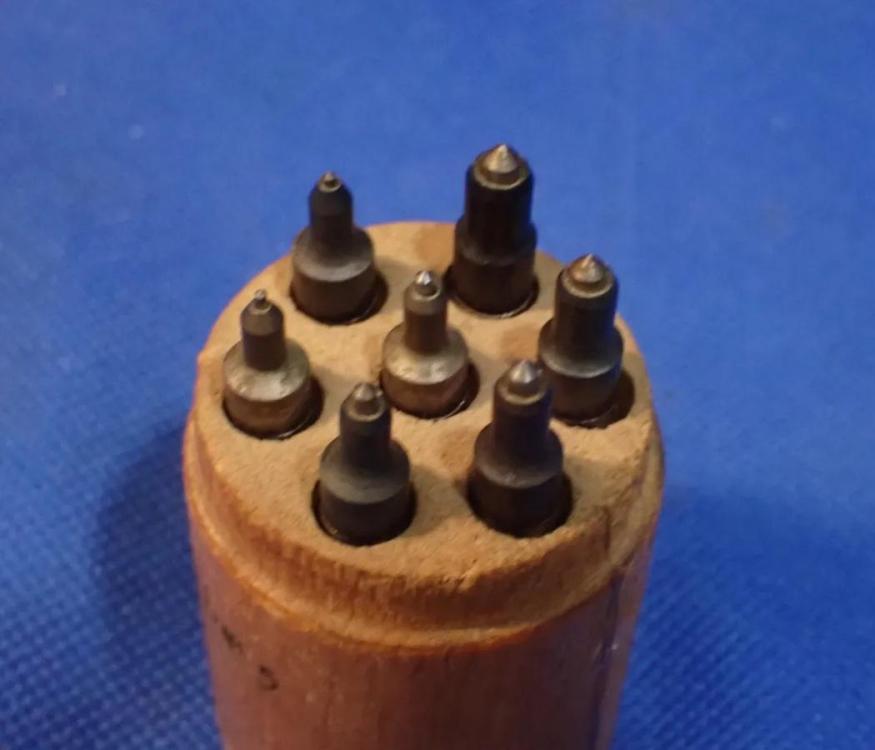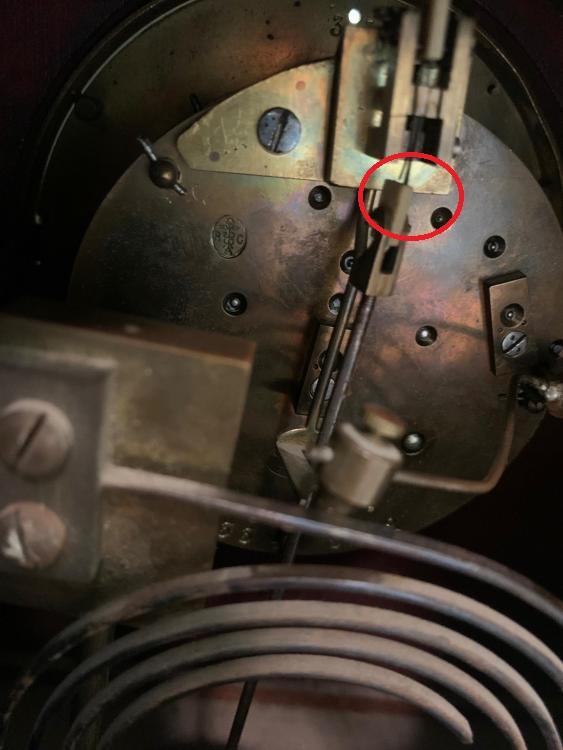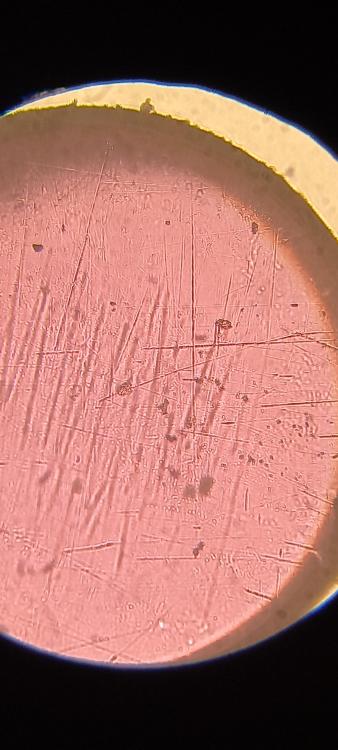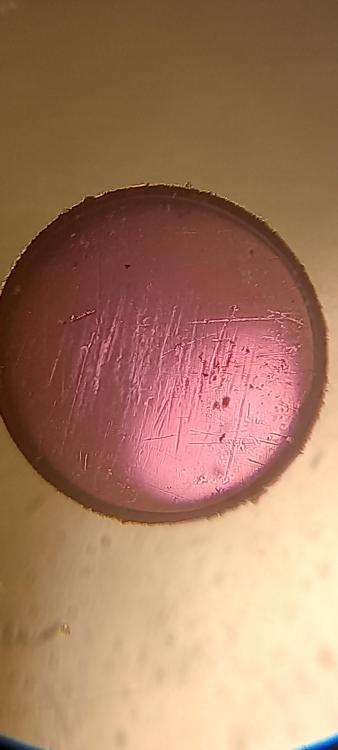Leaderboard
Popular Content
Showing content with the highest reputation on 08/01/23 in Posts
-
I've used ST36 watches for four years to teach to beginners, so must have gone through about 80 watches/movements and find them a good choice for the money. I buy them directly from Hong Kong and China. The students work on the same movement for three months and still have them working within Chronometer standards. Seriously. these movements are that good to adjust and regulate in my experience and opinion even having them taken apart and put together so many times. I've come across two broken screws in all that time and a couple of movements had some issues. Maybe a 1 to 2% fail rate, but those can still be used for spare parts. I'm not disputing the BHI findings, but they aren't all made in one place, so quality is also going to differ from supplier to supplier. China is a big place! I've never seen wear like that on a clutch (sliding pinion) in the BHI picture, on any movement I've worked on and there have been many! As they say, 'One swallow a summer doesn't make'. Granted, the lyre springs are a bit questionable, but from that fault, they learn how to push out the main plate Inca setting enough to replace the spring as though it really was a captive spring like an ETA 6497 and also disassemble the whole balance assembly to replace the balance lyre spring in the correct manner. If someone asked me what watch movement to first work on, it would always be a fully working movement to understand slowly how a big movement is meant to work to its optimum. Working on 'scrappers' is great for manual dexterity skills, but frustrating, as already mentioned, if you think you're getting it going with little experience and knowledge. It can make watchmaking really unenjoyable, self-defeating, and with nothing to show apart from broken parts in lots of pots. I was first shown and taught old pocket watches that had 80 years of tinkerers before me playing and fiddling with them and only found my passion again in wristwatches that worked or I could get working and find parts for. I'm not slating pocket watches, I just think they are niche for some rather than the mainstream. A working movement will better teach a student how it works, why it works in that way, the optimum end shake, side shake, amplitude, etc, and when it doesn't work in that correct way later down the line or in other movements then one is more experienced and knowledgable from the working movements to now remedy the ailing ones.2 points
-
I just got a set of hole closing punches because nobody else bid for them. I know that punching the plate to close a hole is frowned upon in the clock making community and I seen @oldhippy comments on this practice. I've seen some clocks with so many punch marks that it look like the surface of the moon. It seems that hole punching is a common practice. My question is there really no place for hole closing by punching the plate in clockmaking? Is there any use for such tools?1 point
-
Thank you for your introduction and welcome to this friendly forum. We all look forward to your contributions and continued involvement.1 point
-
Often a tongue end spring will hold on a hook that's too worn for a hole end. It would be worth a try before starting to machine things. And the tongue end is far superior anyway.1 point
-
Welcome Harry. I have to get over your profile name first before i even start to read your post haha. Just call me Zaphod1 point
-
Hi welcome to the forum, enjoy.. A picture of the barrel and the pin would be helpful.1 point
-
Rockwell hardness of mild steel is around 70 HRB, and 904L is in the range 70-90 HRB. So I think carbide should be OK. It also seems fairly malleable with good toughness, so should cut well and not chip or crack. I would use cooling (3 in 1 oil and/or a damp cloth) to stop the steel discolouring due to any heat generated, blueing on hands is nice , but not the case. You could be there a while with a pin vice, perhaps take 80% away with a dremmel and finish off the last bit using your suggested pin vice method to get the best of both worlds?1 point
-
"Grade 904L stainless steel is a non-stabilized austenitic stainless steel with low carbon content. This high alloy stainless steel is added with copper to improve its resistance to strong reducing acids, such as sulphuric acid." 904L is also nonmagnetic so you can also confirm with a magnet. Ref: https://blog.thepipingmart.com/grades/904l-stainless-steeluns-n08904-composition-properties-and-uses/1 point
-
Quality is ok, many pros use them. They are made on the french side of the Jura. Maybe they will not last a whole life, just 1/2 Frank1 point
-
I use an optivisor, and highly recommended, especially if you get the loupe for it too. First time around I got the highest power version, but you had to be too close to the watch for it to be practical, so I opted for the version 5, which is x 2.5 I think (just ordered the replacement lens and switched it out). They quote the focal length for each strength, so pick which works for you. I had another kind of visor to start with, one with a light and quick change lenses, but after wearing for a while the weight of the batteries used for the light etc gave me a headache. Also I bumped it and the quick change lens quick-chenged itself into the floor and broke I looked on Amazon and got an an electric adjustable desk, this one: As you can see they aren't as expensive as you might think, and you can adjust with mm accuracy by just pressing a switch to move between all the jobs you are doing. No more neck ache!1 point
-
Handles are knurled chrome plated brass. Well my first cheap screwdriver set is also chrome plated and they didn't take long to wear out quickly. Technically the set can still be used at this point but they look and feel terrible so I abandoned them and bought a full 316l stainless steel set. So IMO you should look for something made from solid stainless steel, any plated set are not worth it.1 point
-
I've used surgical loupes in my line of work for almost 20 years. Can't live without them. They cost me about $2000. Had to modify the design several times to suit my needs. But surgical loupes are not really suitable for general watch repair. As @Neverenoughwatches stated, the working length is too long. The working length had to be about 12-16 inches long, depending on the users height. This working length was important for 2 reasons, to maintain good posture and to keep us out of the patient's face. But the surgical loupe is a game changer in dentistry. Previously, only middle aged dentist use them to compensate for deteriorating eyesight. But now, dental schools are starting off their students with loupes right from the start. Because you are only as good as what you are able to see. Surgical microscopes are becoming more common in dentistry. If I had another 10 years of working life, I would have invested in a surgical microscope. Those things are really expensive. A low end setup us typically about $12000. Even a Chinese knockoff is about $4000. But coming back to watchmaking, I had to dig up my surgical loupes a couple of days ago to setup the escapement in a grandmother clock. So, there is still a limited use for it.1 point
-
It is a French strike and it is filthy and I would say it is 8 day duration with rack striking. The suspension spring is broken (see photo) so it will not work properly. It needs a good clean. These movements are good quality and made in there thousands. It is late for me and I'm off to bed. I can carry on tomorrow explaining what and how to clean these movements.1 point
-
I understand that completely John , people can be eager to run before they can walk. Much more related to a younger generation. I'm 56, so have outgrown most of my impatience, and have always had some kind of order as to how i do things ( admittedly not perfect, we are only human after all ) Your tool use needs to be accurate and efficient to do good work, makes sense to know how to use them correctly first and in a way that works best for oneself. Bad habits are difficult to remove, i once read somewhere and this is related to muscle building but still applies. It takes approximately 500 repetitions to develop a form ( a body movement, a habit created by a mind to muscle connection ) . If that form ( habit ) that you have been practicing is poor it can then take another 5000 repetitions to break that form and create a new correct one . Moral is get it right first time or waste time retraining to get it right. That was my theory behind practicing with all the broken watches, just to get a technique pattern down solid before i even touched anything working. There with you John, most of the world is dependent on China's production. They pull the plug on it would leave us screwed. What have we done . But did we know any better all those years ago when buying all those nice cheap things in one go without having to wait. Someone must have and kept it quiet.1 point
-
Hi the clock is attributed to C.A.RICHARD &cie. Rue de Bonny,Paris Frankenriech 1867 from your description it sounds very much that the escapement is all out of kilter. What needs to be done is remove the movement from the case, and set on a level base with the clock level and see where it’s at, check the state of the anchor/ pallets for wear, broken or bent pivots and worn pivot holes, In other words the obvious. Check the pallet locking on the escape wheel. The state of the plates looks like it’s in need of a good clean and oil. Maybe a new suspension spring as any kinks bends or twists render it useless. Enough for starters, but remove the movement set it up and then maybe more pictures especially of the escapement. By the way it a nice little clock.1 point
-
I have seen previous posts here also on other forums that after some beginners had lost parts like the typical springs and jewels that beginners often ping away, they were unable to obtain any replacements to have that movement working again. Possibly resulting in another purchase of that movement. Personally i wouldn't have liked to start my learning on a low cost Chinese movement. I understand Seagull has been long established, something like almost 70 years and is the largest manufacturerer of mechanical watches in the world. But I still class it as super mass produced rubbish. Some things we cant avoid like electronics, anywhere else cant match their costs. And I've seen cheap power tools and electrical items last little more than a year or 2. The UK used to make some very long lasting equipment years ago, i expect most of the companies long since gone. But the things they made still around and working well, i see them all the time at car boots. I would always want to learn on and see quality first before having to deal with cheap crap.1 point
-
It's a excellent training movement that is going to have a short life as a training movements for newbies. It is also considerably cheaper than purchasing a brand-new 6497. But I would agree that it looks like for anything long term it's not your best option.1 point
-
High folks. I had the escapement apart and found a tiny piece of lint hiding around the escapement wheel. I could not see thus even under the microscope. Problem now gone away and running to 2 secs a day when worn. Thanks again.1 point
-
Wet wet and and dry just gjves a finer finish, just tends to float the removed particles, like oil or water used to lubricate a sharpening stone. I assume the scratches will just be finer. It was more about finding out how tough a jewel is. The real purpose of the experiment when finished is to see if ordinary paper scratches a jewel as it has been suggested. Or if there was another cause for the scratches found.1 point
-
Yes, wet or dry (States terminology) is silicon carbide, sitting above aluminum oxide/sapphire at 9.5 Mohs, so it should definitely scratch a jewel.1 point
-
Eyup watch peeps , so i had a little experiment, not completely controlled and a bit more to do yet. I cant vouch for the quality of the jewel, all i can say it was from a 60's oris movement, so i would think reasonable, and it was in fair condition so i thought it a good test sample, i didn't take a photo but that doesn't really matter as you will see. The scratch material just some cheap 400 wet and dry also not controlled, as i have no idea what it made from, probably aluminium oxide but that doesnt matter either as the test is just to see if a jewel will scratch first. I thought lets see how tough they are and then work backwards to a medium that wont scratch. First just a couple of light strokes backwards and forwards on the 400 produced a few light marks. I was very slightly unsure as to whether I'd inspected correct so lets give the jewel a good rub. 15 seconds of still fairly light pressure , which equates to around 30 backwards and forwards. Here is the result at x60 and x100. I didn't need to get any closer. I think that answers the question # does a jewel scratch # ? spot on Watchie, complete carnage. I will try a few more from different sources , and still yet to test on different papers. Oh the watchpaper has just a weave like pattern with no particles but has holes in it, plane paper more or less the same weave but no particles or holes. I tried a few samples, obviously it can vary.1 point
-
I think I've mentioned this before but the instructor I had at school George used to say don't please the timing machine. I wish my boss at work would understand this as we spend way too much time trying to make watches perfect that were never that perfect in the first place. The unfortunate expectation of just because you have a timing machine that now your watch should perform at some magical specification that the watch was never designed to do. Plus the obsession with this group of a obsession with amplitude. Whereas if you look at timing companies specifications they typically only concerned really about timekeeping. For amplitude typically they don't want to go over 300° when the watches fully wound up and they usually specify an amplitude at 24 hours but they really are only concerned about timekeeping. Then for instance ultimate timekeeping chronometer watches they're not timed on a timing machine not for the chronometer certification. They're basically timed by visual observation Over several days in several positions in temperatures. In other words all they care about is the watch keep time. Watches themselves are interesting in that they average their problems over time. Timing machines tend to look at things instantaneously. At least for the most part some timing machines and some of the software let you do other ways of looking at things like a time plot. With the time plot you can see the fluctuations of the power through the gear train in a nice graphical display. All gear trains will have power fluctuations some trains because of poor manufacturing or because they didn't have a timing machine to please it's just what they do will have dramatic power fluctuations. Those power fluctuations will show up on the timing machine. Sometimes if you look at the numbers like amplitude you'll see them slowly increasing and decreasing by quite a bit as a gear train power fluctuation issue. Short of replacing all the gears not always recommended remanufacturing the watch to something it wasn't also not recommended basically you don't worry about it. Although it is really nice to have a time plot capability to see why they are having a problem so you don't have to get upset worry about it. The timing machine is still an excellent device for diagnosing problems regulating watches but the most important thing still is does the watch keep time over time we would all sleep a lot better if that's all we were worried about. Then quit trying to please a timing machine with watches that were never meant necessarily to do whatever you perceive the timing machine thinks there supposed to do. Then yes I know it's really hard to say that and do that which is why I spend a lot of time in front of the timing machine trying to get things perfect being perfect is really bad In watch repair.1 point
-
If there are manufacturing residues in paper I doubt there are any hard enough to abrade sapphire. If there were a few particles equal to sapphire in hardness, even in some relatively high concentration, it would take some effort to get it to scratch. Calcium carbonate is a common additive, which is abrasive enough to dull steel (why your mom would yell at you for cutting paper with her fabric scissors), but nowhere near hard enough to hurt sapphire. Calcium carbonate= 3 Mohs scale, sapphire 9, diamond 10. I have made hole and other jewels from scratch, using diamond, and it's a tedious process. I know that diamonds are cut and faceted using diamond, and it's a very tedious process. That aluminum oxide causes scratches on sapphire is no surprise... but man, I would hate to have to make a jewel using it! Lens paper is especially free of anything abrasive, and even then there's a less-is-more approach to cleaning lenses. Glass averages around 6 Mohs scale, so harder than calcium carbonate, but that scale is practically logarithmic, so it's a lot harder. I have used a lot of really old cameras and scratches on the lenses wasn't really an issue (degradation of cement or propagation of fungus, yes), but scratches on lens coatings is a very real issue. If you want to get into really hairy territory check out the process to clean a precision front surface mirror, yikes!1 point
-
I've also started to check this as well after downloading a slow motion app. The machines are good for pointing you in the right direction of a fault though. Its also nice to see an improvement of the trace, i do agree and often dismiss to a point what the amplitude reads. I've had a movement coming to the end of its wind showing 300° it can be very confusing for a beginner.1 point













